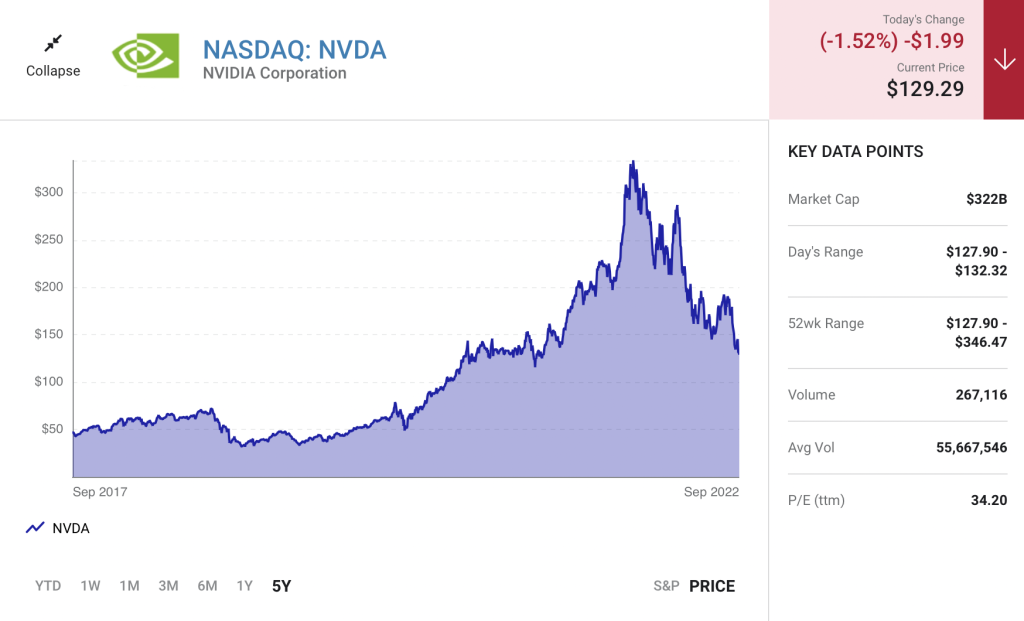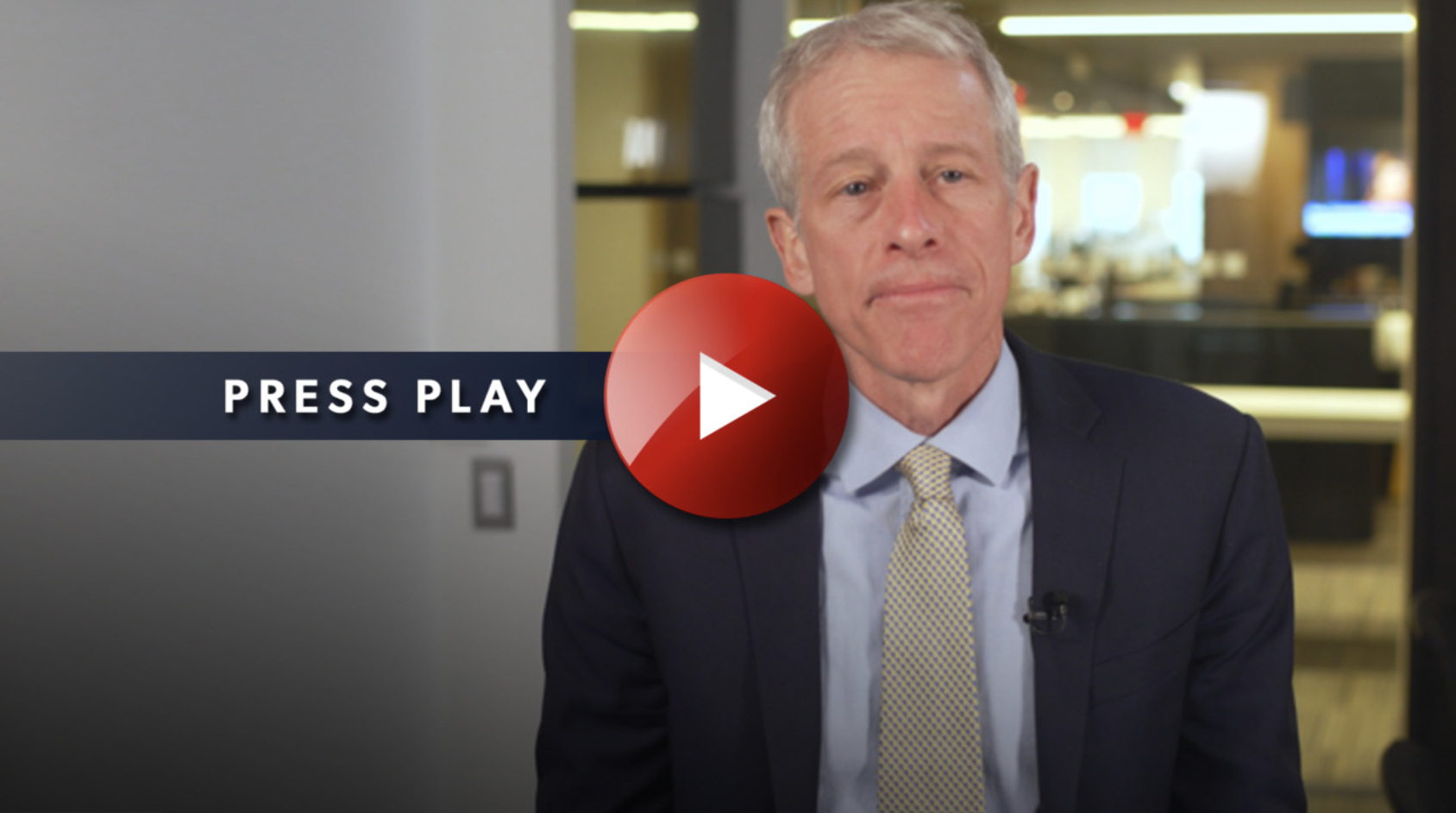This fast-growing semiconductor company has been ravaged by the bear market, but this too shall pass.
Technology stocks have taken it on the chin this year as investors dumped high-growth companies with equally high valuations. This phenomenon was further compounded by rising interest rates, 40-year-high inflation, and ongoing economic uncertainty. These factors have pushed the Nasdaq Composite into bear market territory, with the widely followed index down roughly 23% from last year’s November high.
As much as investors dislike the unending volatility and paper losses such markets bring, the tech sell-off has created some compelling opportunities for investors. Perhaps one of the best examples of that is Nvidia(NVDA -1.52%). The company, which supplies graphics processing units (GPUs) used in gaming, cloud computing, data centers, and more, has seen its stock crash more than 61% as of this writing, despite its history of resilient growth.
Can Nvidia overcome the headwinds that have dogged its stock so far this year? Let’s look at the big picture for clues.

Shall we play a game?
Like many technology stocks, Nvidia was already reeling, as some investors “threw out the baby with the bath water,” so to speak. Things got worse last month when the semiconductor specialist released the results for its fiscal second quarter (ended Jul. 31), which were far worse than expected. Revenue of $6.7 billion grew 3% year over year, dragged down by weakness in its flagship gaming segment, which delivered revenue that tumbled 33% year over year, as consumers reined in spending on Nvidia’s high-end processors.
It’s important to take a step back, or risk missing the forest for the trees. Nvidia still dominates the discrete desktop GPU market with an 80% share in the second quarter, even stealing additional market share from its rivals. This suggests that once the economy regains its footing, Nvidia’s gaming segment will reboun
Head in the clouds?
Even as Nvidia’s gaming segment suffered, its data center segment, which includes processors used in cloud computing, data centers, and artificial intelligence (AI), continued its robust growth. Revenue for the segment grew to $3.81 billion, up 61% year over year and 1% sequentially — even in the face of macroeconomic headwinds.
Nvidia is the leading provider of processors used in cloud computing, partnering with all the major cloud providers. This includes Amazon Web Services (AWS), Alphabet‘s Google Cloud, Microsoft Azure, as well as Alibaba Cloud, Baidu Cloud, and Tencent Cloud, among many others.
That isn’t to say that Nvidia is immune to the challenges facing the broader economy. However, the digital transformation is ongoing and cloud computing has become a necessity for many businesses, rather than a luxury. Storing data in the cloud is cost-effective, improves developer operations, is more secure, and helps businesses to scale and innovate, making it table stakes for companies wanting to compete. Furthermore, it’s estimated that the cloud computing market will top $480 billion in 2022, up 18% year over year, growing to more than $1.7 trillion by 2029, a compound annual growth rate (CAGR) of 19.9%. As one of the most critical components in cloud computing, Nvidia is well-positioned to benefit from this ongoing secular trend.
There are wildcards…
While gaming and cloud computing represent the lion’s share of Nvidia’s revenue, the company has additional opportunities that are largely untapped. Cloud gaming, which allows players to compete in popular games without buying expensive hardware, is just getting started. Nvidia also has developed dedicated processors for the professional visualization market, which helps designers, creators, engineers, data scientists, and architects develop new 3D tools and content.
Additionally, while some of the initial hype has died down, self-driving cars and trucks still have the potential to change the world. Nvidia has partnered with a veritable who’s-who in the autonomous driving space, collaborating with more than 120 car and truck makers, robotaxi services, and tier 1 automotive suppliers, as well as simulation, mapping, sensor, and software companies. This puts Nvidia squarely at the cross roads of this revolutionary technology, once it reaches critical mass.
Finally, there’s the company’s large and growing opportunity. In fiscal 2022, (ended Jan. 30), Nvidia generated full-year revenue of $26.9 billion, but that pales in comparison to its total addressable market, which management estimates at more than $1 trillion.
What the future holds
A review of the available evidence suggests that the weakness hitting Nvidia’s business — and its stock — is the result of the prevailing economic headwinds. That means that once the economy is on better footing, it’s likely Nvidia will come roaring back.
That’s not to say that the stock couldn’t fall further — it certainly could. It’s also worth noting that Nvidia isn’t cheap in terms of traditional valuation metrics. Even after its recent shellacking, the stock is still trading for 43 times earnings. While that’s near its lowest level in years, its still far higher than the Nasdaq’s price-to-earnings ratio of 24. However, given the company’s history of innovation, industry-leading position, and massive opportunity, I’d argue that the stock is a steal at the current price.
Given what we know, investors should buy Nvidia stock now before it soars.
Read Next- A company with 400 million patents
One company has quietly compiled more than 400 million official trade secrets.
Trade secrets are like patents in that they protect valuable and proprietary information…
But unlike patents, trade secrets take less time to register… and more importantly, they never expire.
Which is a huge advantage for this little-known company.
You see, this company is using these trade secrets to build the world’s largest “codebase,” which will be the key to it becoming “America’s Next Big Monopoly.”
Not surprisingly, Wall Street is starting to take notice. And the smart money is already pouring in.
Tech investor Cathie Wood has invested over $80 million already, and Microsoft founder Bill Gates has invested as well.
Get the details here before this story hits the mainstream media.





